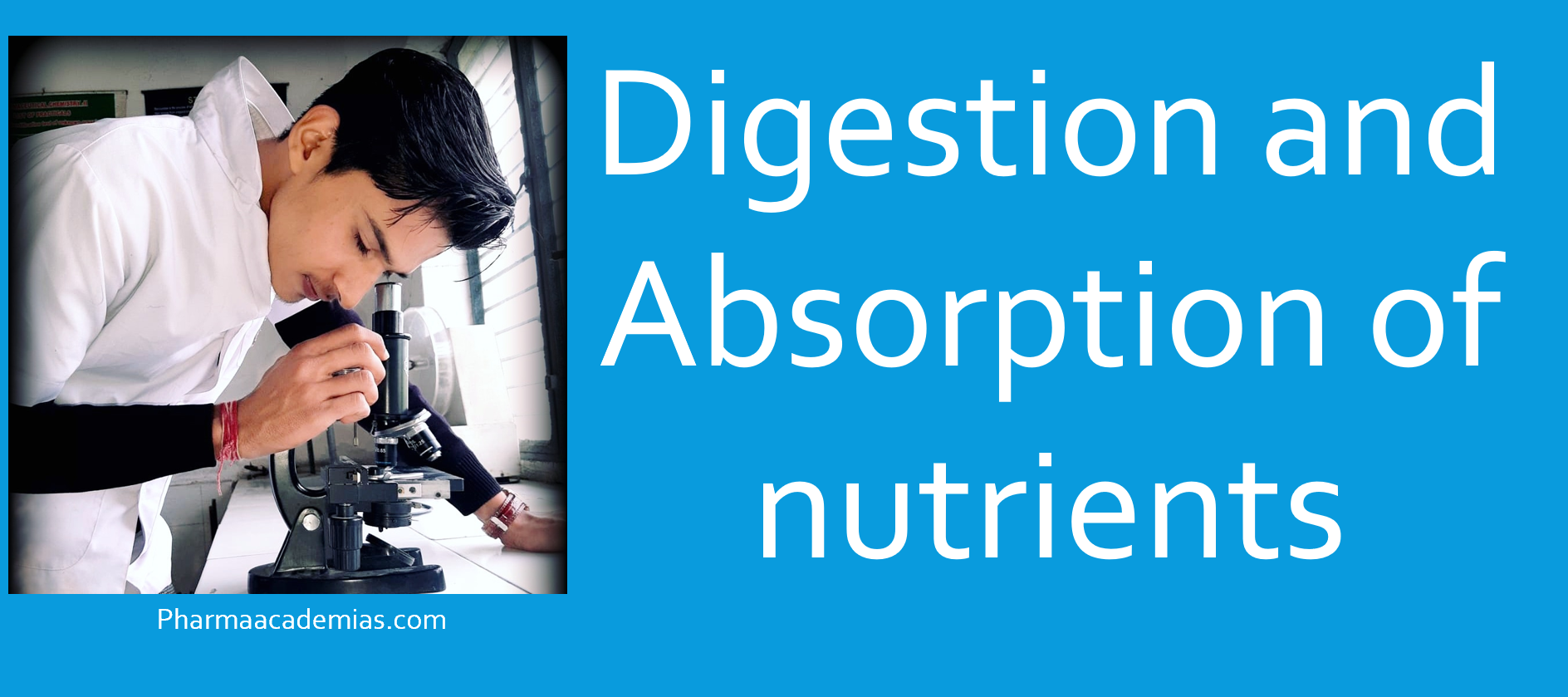Digestion involves breaking down food into smaller components for cellular absorption and utilization. Absorption is the uptake of these components into the bloodstream or lymphatic system for distribution to cells. The gastrointestinal tract (GIT) is where most digestion and absorption of nutrients occur. Here’s an overview of the processes for different macronutrients:
1.Carbohydrate:
1. Digestion: Carbohydrate digestion begins in the mouth, where salivary amylase breaks down complex carbohydrates into smaller polysaccharides and disaccharides. In the small intestine, pancreatic amylase and enzymes on the brush border of the intestinal cells further break down these complex carbohydrates into simple sugars like glucose, fructose, and galactose.
2. Absorption: The small intestine absorbs these simple sugars through the intestinal lining into the bloodstream. They are then transported to the liver, where they can be metabolized or distributed to other tissues for energy.
2. Proteins:
1. Digestion: Protein digestion starts in the stomach, where the enzyme pepsin breaks down proteins into smaller polypeptides. In the small intestine, pancreatic enzymes called proteases and enzymes on the brush border further break down polypeptides into amino acids.
2. Absorption: Amino acids are absorbed by the cells lining the small intestine and transported into the bloodstream. From there, they are carried to various tissues throughout the body to support growth, repair, and other vital functions.
3. Fat:
1. Digestion: Fat digestion begins in the small intestine. Bile salts, produced by the liver and stored in the gallbladder, emulsify large fat droplets into smaller droplets, increasing their surface area. Pancreatic lipase then breaks down these smaller fat droplets into fatty acids and monoglycerides.
2. Absorption: Cells lining the small intestine absorb fatty acids and monoglycerides, reassembling them into triglycerides. The body packages these triglycerides into structures called chylomicrons, releasing them into lymphatic vessels called lacteals. Eventually, chylomicrons enter the bloodstream and distribute to various tissues for energy or storage.
4. Vitamins and Minerals:
1. Digestion: Some vitamins and minerals can enter the body in their original form, bypassing the need for extensive digestion. Others may necessitate enzymatic action or the binding of carrier proteins for absorption.
2. Absorption: Various mechanisms absorb vitamins and minerals throughout the small intestine. These substances move through the intestinal lining into the bloodstream and are then carried to cells and tissues, where they serve various physiological functions.
Water absorption occurs throughout the gastrointestinal tract (GIT), primarily in the small and large intestines, to maintain proper hydration and electrolyte balance. Efficiently digesting and absorbing nutrients is vital for supplying the body with the energy and essential components necessary to maintain overall health and proper function.

